The Greatest Unsolved Problem In Theoretical Physics

How the “hierarchy problem,” or why gravity is so much weaker than everything else, might be the key to the entire Universe.
“I just think too many nice things have happened in string theory for it to be all wrong. Humans do not understand it very well, but I just don’t believe there is a big cosmic conspiracy that created this incredible thing that has nothing to do with the real world.” –Ed Witten
Our standard model of elementary particles and forces has recently become as close to “complete” as we could conceivably ask for. Every single one of the elementary particles — in all their different conceivable incarnations — has been created in the lab, measured, and had its properties determined. The last holdouts, the top quark and antiquark, the tau neutrino and antineutrino, and finally the Higgs boson, have all fallen prey to our detection capabilities at last.
That last one, in particular — the Higgs — solved a long-standing problem in physics: finally, we can confidently explain where these elementary particles each get their rest mass from!
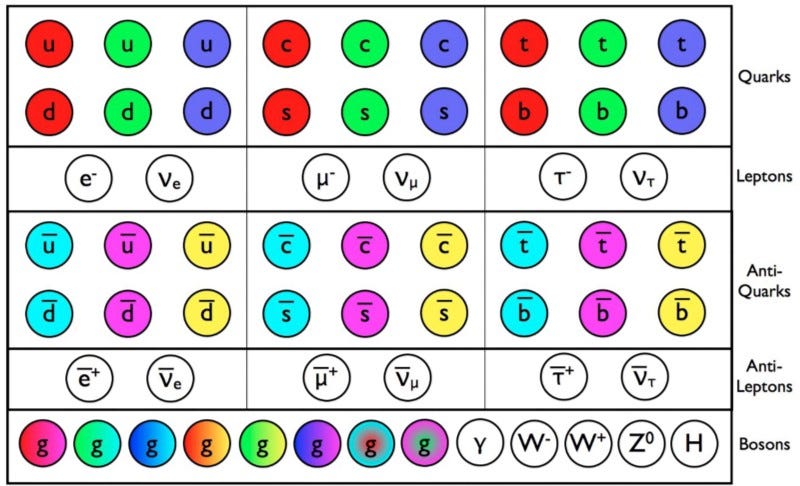
That’s great and all, but it’s not like science ends now that we’ve finished that part of the puzzle. Rather, there are important follow-up questions, and one that we can always ask is, “what comes next?” When it comes to the standard model, we still don’t have everything figured out. One thing in particular stands out to most physicists: to find it, I’d like you to consider the following property of the standard model.
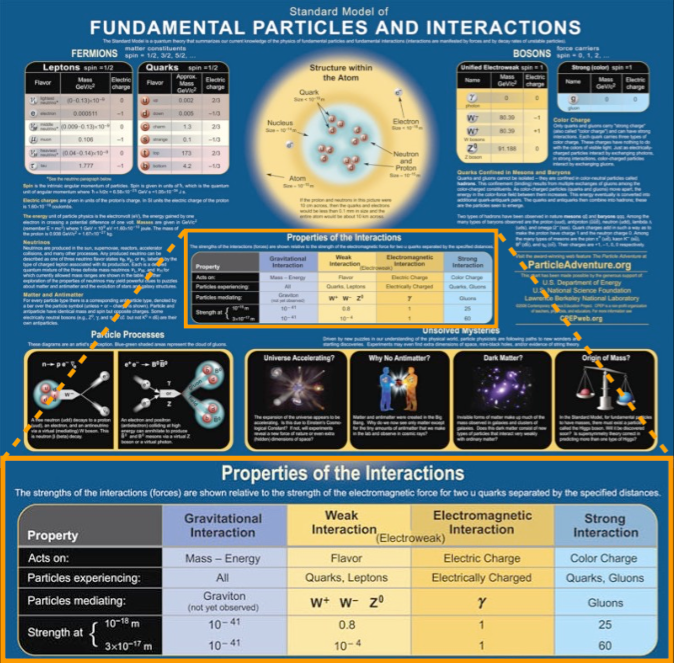
On the one hand, the weak, electromagnetic, and strong forces can all be quite important, depending on the energy and distance scales of the interaction in question.
But gravitation? Not so much.
If you’ve ever had the opportunity to read this fabulous book by Lisa Randall, she writes at great length about this puzzle, which I would call the greatest unsolved problem in theoretical physics: the Hierarchy Problem.
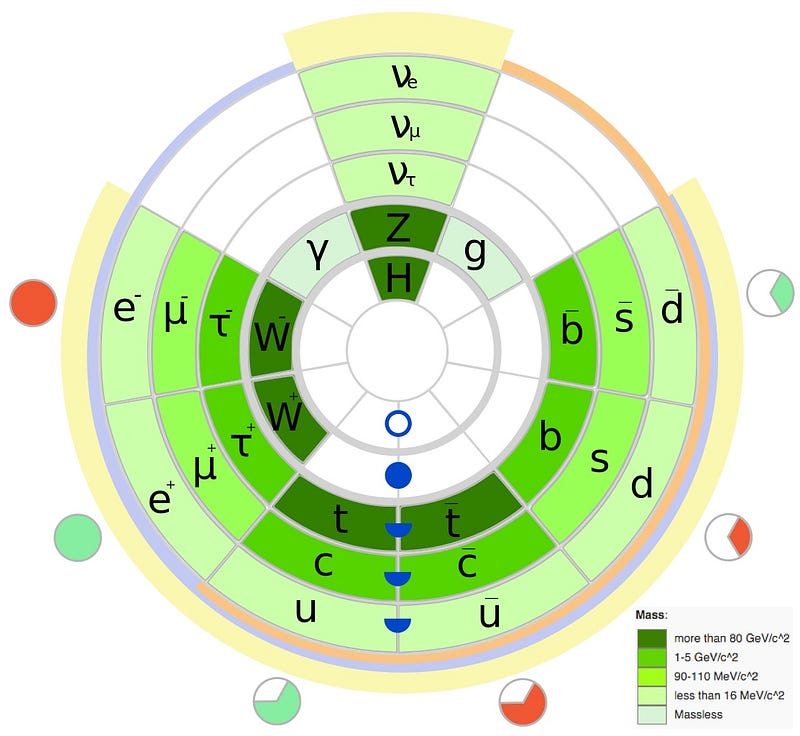
What we can do is take any two fundamental particles — of any mass and any of the forces through which they interact — and find that gravity is literally forty orders of magnitude weaker than all the other known forces in the Universe. That means the gravitational force is a factor of 10⁴⁰ weaker than the other three forces. For example, even though they’re not fundamental, if you placed two protons a single meter apart, the electromagnetic repulsion between them would be approximately 10⁴⁰ times stronger than the gravitational attraction. Or, and I’ll write it out just this once, we’d need to increase the force of gravity’s strength by 10,000,000,000,000,000,000,000,000,000,000,000,000,000 in order to have its strength be comparable to the other known forces.
You can’t just “make” a proton weigh 10²⁰ times as much as it would normally; that’s what it would take to make gravity bring two protons together, overcoming the electromagnetic force.
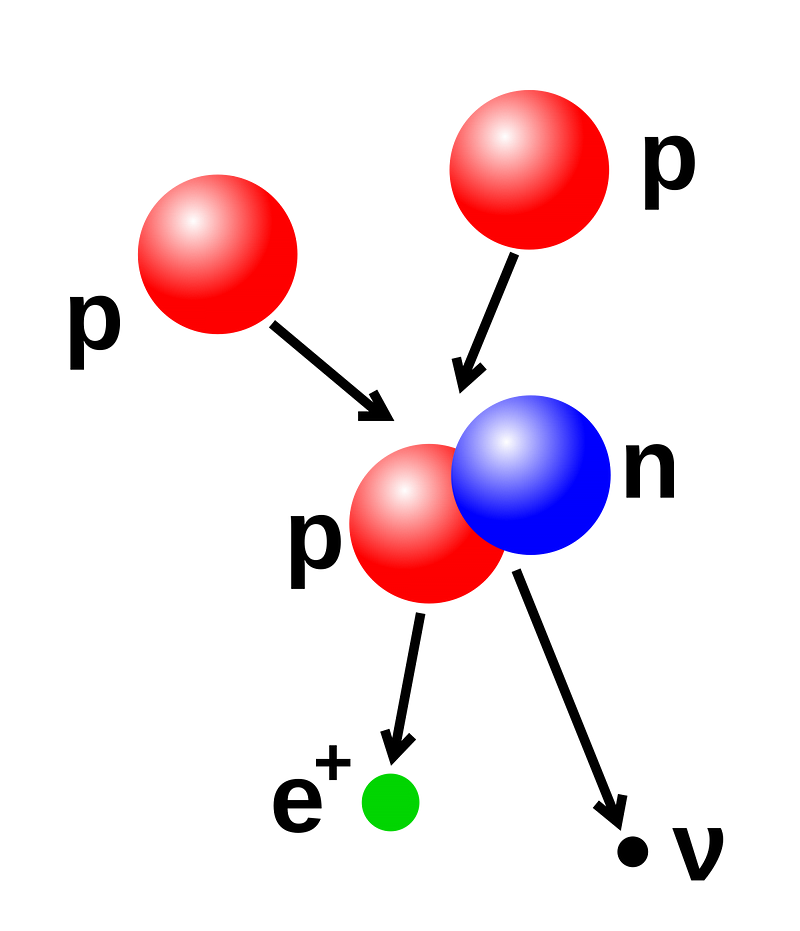
Instead, if you want to make a reaction like the one above happen spontaneously, where protons do overcome their electromagnetic repulsion, you need something like 10⁵⁶ protons all together. Only by collecting that many of them, under their combined force of gravity, can you overcome electromagnetism and bring these particles together. As it turns out, 10⁵⁶ protons is approximately the minimum mass of a successful star.
That’s a description of the way our Universe works, but we don’t understand why. Why is gravity so much weaker than all the other forces? Why is the “gravitational charge” (i.e., mass) so much weaker than the electric or color charge, or even than the weak charge, for that matter?
That’s what the Hierarchy Problem is, and that problem is by many measures the greatest unsolved problem in physics. We don’t know the answer, but we’re not completely in the dark on this. Theoretically, we have some good ideas as to what the solution might be, and a tool to help us investigate whether any of these possibilities could be correct.
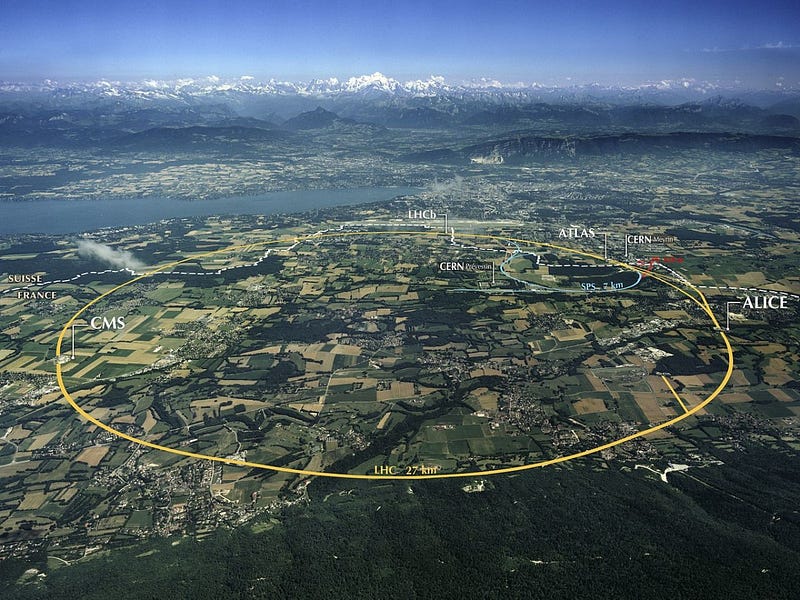
So far, the Large Hadron Collider — the highest-energy particle collider ever developed — has reached unprecedented energies under laboratory conditions here on Earth, collecting huge amounts of data and reconstructing exactly what took place at the collision points. This includes the creation of new, never-before-seen particles (like the Higgs, which the LHC discovered), our old, familiar standard model particles (quarks, leptons, and gauge bosons), and it can — if they exist — produce any other particles that may exist beyond the standard model.
There are four conceivable ways — i.e., four good ideas — that I am aware of to solve the hierarchy problem. The good news for experiment is that if any of these solutions are the one that nature has chosen, the LHC should find it! (And if not, we’ll need to keep searching.)
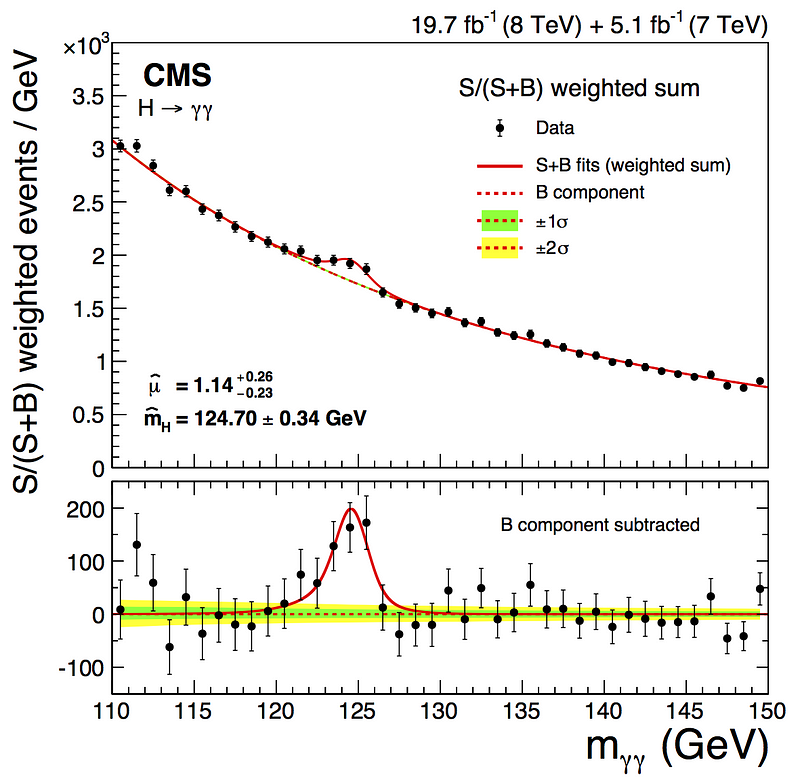
Other than the single Higgs boson whose discovery was announced three years ago now, no new fundamental particles have been found at the LHC. (Not only that, but there are no compelling new candidate particles that have emerged, either.) Furthermore, the particle that was found was completely consistent with the standard model Higgs; there is no statistically significant result that strongly suggests any new physics has been observed beyond the standard model. Not for a composite Higgs, not for multiple Higgs particles, not for un-standard-model-like decays, not anything of that sort.
But we’ve begun taking data at even higher energies — up to 13/14 TeV from just half that — to try and find out even more. With this in mind, what are the possible, reasonable solutions to the hierarchy problem that we’re poised to explore?
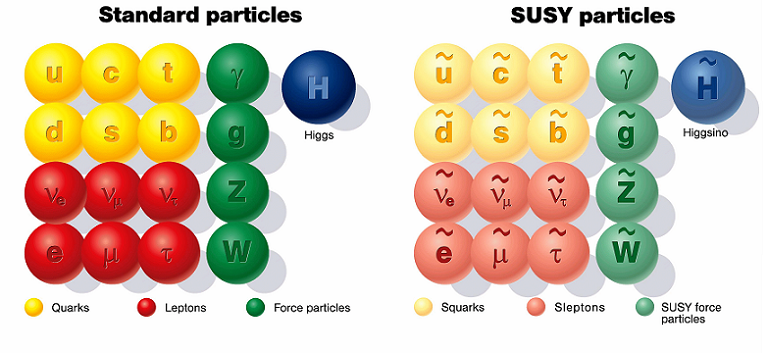
1.) Supersymmetry, or SUSY for short. Supersymmetry is a special symmetry that would cause the normal masses of any particles — which would have been sufficiently large so that gravity was of comparable strength to the other forces — to cancel out, to a high degree of accuracy. The symmetry also entails that every particle in the standard model has a superparticle partner, and (not shown) that there are five Higgs particles (see here for why) and five Higgs superpartners. If this symmetry exists, it must be broken, or the superpartners would have the same exact masses as the normal particles, and hence would’ve been discovered by now.
If SUSY is to exist at the appropriate scale to solve the hierarchy problem, the LHC — once it reaches its full energy of 14 TeV — ought to find at least onesuperpartner, as well as at least a second Higgs particle. Otherwise, the existence of very heavy superpartners would create yet another puzzling hierarchy problem, one with no good solution. (For those of you wondering, the absence of SUSY particles at all energies would be enough to invalidate string theory, as supersymmetry is a requirement of string theories that contain the standard model of particles.)
So that’s the first possible solution to the hierarchy problem, one that has no evidence to support it as of today.
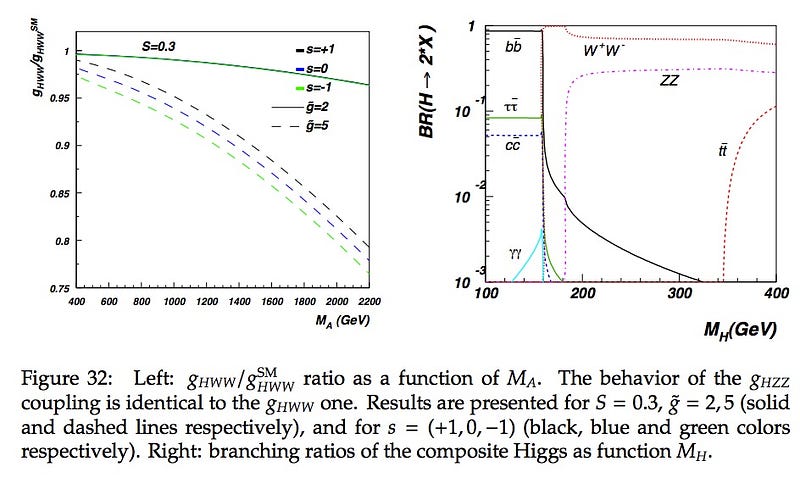
2.) Technicolor. No, this isn’t a 1950s cartoon; technicolor is the term for physics theories that require new gauge interactions, and also that have either no Higgs particles or unstable/unobservable (i.e., composite) Higgses. If technicolor were correct, it would also require an interesting new slew of observable particles. Although this could have been a plausible solution in principle, the recent discovery of what appears to be a fundamental, spin-0 scalar at the right energy to be the Higgs seems to invalidate this possible solution to the hierarchy problem. The only escape route would be if this Higgs turned out not to be a fundamental particle, but rather a composite one, made up of other, more fundamental particles. The full upcoming run at the LHC, at the enhanced energy of 13/14 TeV, should be enough to find out once-and-for-all whether that’s the case.
There are two other possibilities, one which is much more promising than the other, both of which involve extra dimensions.
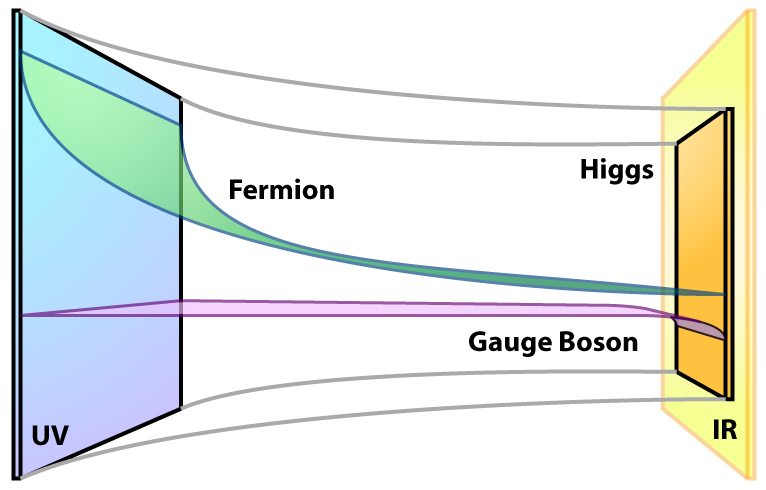
3.) Warped Extra Dimensions. This theory — pioneered by the aforementioned Lisa Randall along with Raman Sundrum — holds that gravity is just as strong as the other forces, but not in our three-spatial-dimension Universe. It lives in a different three-spatial-dimension Universe that’s offset by some tiny amount — like 10^(–31) meters — from our own Universe in the fourth spatial dimension. (Or, as the diagram above indicates, in the fifth dimension, once time is included.) This is interesting, because it would be stable, and it could provide a possible explanation as to why our Universe began expanding so rapidly at the beginning (warped spacetime can do that), so it’s got some compelling perks.
What it should also include are an extra set of particles; not supersymmetric particles, but Kaluza-Klein particles, which are a direct consequence of there being extra dimensions. For what it’s worth, there has been a hint from one experiment in space that there might be a Kaluza-Klein particle at an energy of about 600 GeV, or about 5 times the mass of the Higgs. Although our current colliders have been unable to probe those energies, the new LHC run should be able to create these in great enough abundance to detect them… ifthey exist.
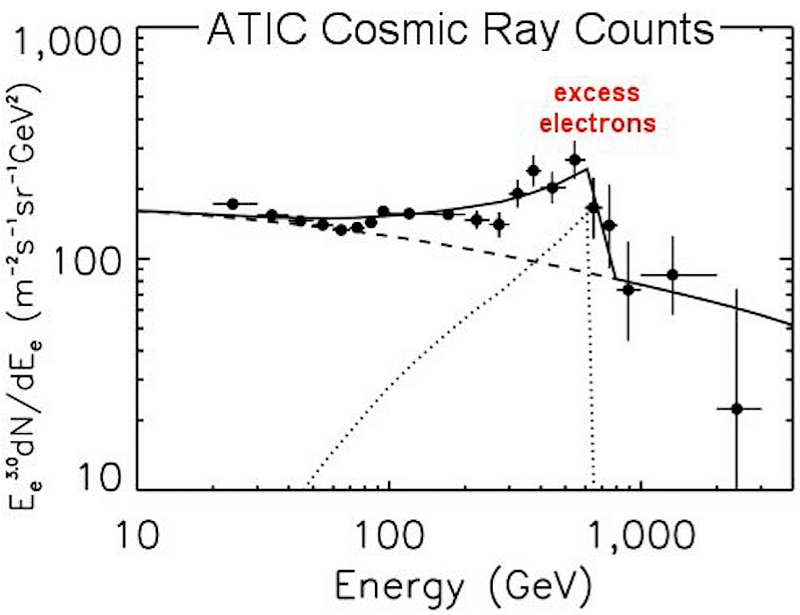
The existence of this new particle, however, is by no means a certainty, as the signal is just an excess of observed electrons over the expected background. Still, it’s worth keeping in mind as the LHC eventually ramps up to full energy; almost any new particle that’s below 1,000 GeV in mass should be within range of this machine.
And finally…
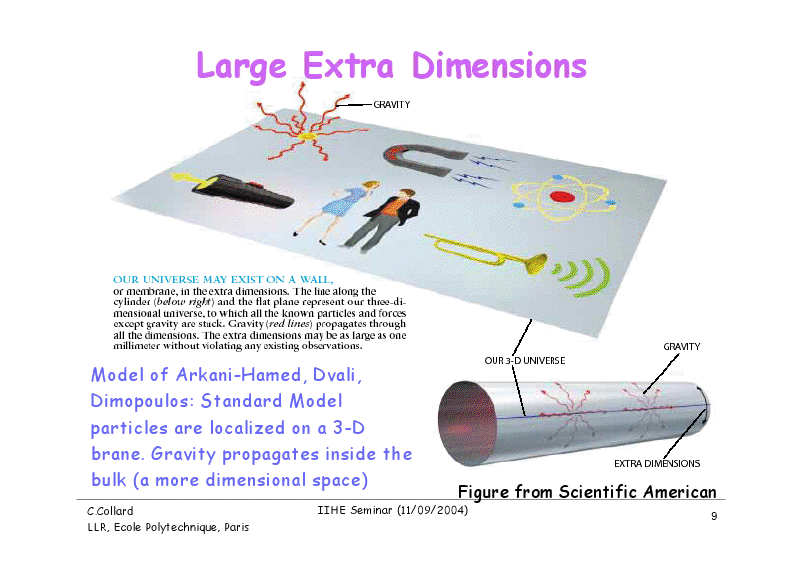
4.) Large Extra Dimensions. Instead of being warped, the extra dimensions could be “large”, where large is only large relative to the warped ones, which were 10^(–31) meters in scale. The “large” extra dimensions would be around millimeter-sized, which meant that new particles would start showing up right around the scale that the LHC is capable of probing. Again, there would be new Kaluza-Klein particles, and this could be a possible solution to the hierarchy problem.
But one extra consequence of this model would be that gravity would radically depart from Newton’s law at distances below a millimeter, something that’s been incredibly difficult to test. Modern experimentalists, however, are more than up to the challenge.
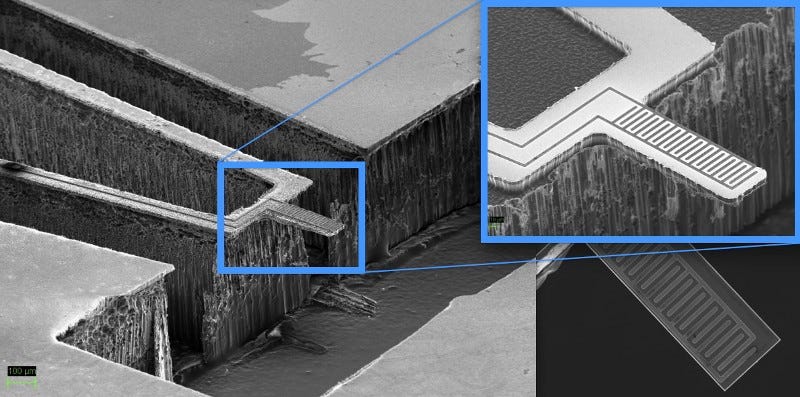
Tiny, supercooled cantilevers, loaded with piezoelectric crystals (crystals that release electrical energies when their shape is changed / when they are torqued) can be created with spacings of mere microns between them, as shown above. This new technique allows us to place constraints that if there are “large” extra dimensions, they’re smaller than around 5–10 microns. In other words, gravity is right, as far as General Relativity predicts, down to scales much smaller than a millimeter. So if there are large extra dimensions, they’re at energies that are both inaccessible to the LHC and, more importantly, that do not solve the hierarchy problem.
Of course, there either could be a completely different solution to the hierarchy problem, one that won’t show up in our current colliders, or there may not be a solution at all; this could just be the way nature is, and there may be no explanation for it. But science will never progress unless we try, and that’s what these ideas and searches are: our attempt to move our knowledge of the Universe forward. And as always, as the LHC’s Run II has already begun, I can’t wait to see what — beyond the already-discovered Higgs boson — just might turn up!
Leave your comments on our forum, help Starts With A Bang! deliver more rewards on Patreon, and pre-order our first book, Beyond The Galaxy, today!





